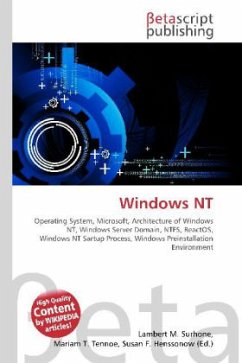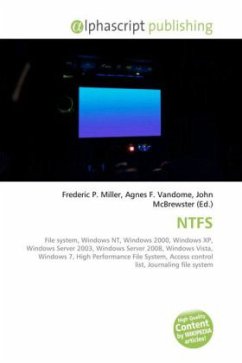
Architecture of Windows NT
Versandkostenfrei!
Versandfertig in 6-10 Tagen
29,99 €
inkl. MwSt.

PAYBACK Punkte
15 °P sammeln!
The architecture of Windows NT, a line of operating systems produced and sold by Microsoft, is a layered design that consists of two main components, user mode and kernel mode. It is a preemptive, reentrant operating system, which has been designed to work with uniprocessor and symmetrical multi processor -based computers. To process input/output requests, they use packet-driven I/O, which utilizes I/O request packets and asynchronous I/O. Starting with Windows 2000, Microsoft began making 64-bit versions of Windows available before this, these operating systems only existed in 32-bit versions...
The architecture of Windows NT, a line of operating systems produced and sold by Microsoft, is a layered design that consists of two main components, user mode and kernel mode. It is a preemptive, reentrant operating system, which has been designed to work with uniprocessor and symmetrical multi processor -based computers. To process input/output requests, they use packet-driven I/O, which utilizes I/O request packets and asynchronous I/O. Starting with Windows 2000, Microsoft began making 64-bit versions of Windows available before this, these operating systems only existed in 32-bit versions. Programs and subsystems in user mode are limited in terms of what system resources they have access to, while the kernel mode has unrestricted access to the system memory and external devices. The Windows NT kernel is known as a hybrid kernel. However some kernel developers such as Linus Torvalds, argue that all essential parts of the system are executed in kernel mode, thus making it a monolithic kernel that is structured similarly to a microkernel. The architecture comprises a simple kernel, hardware abstraction layer, drivers, and a range of services, which all exist in kernel mode.












